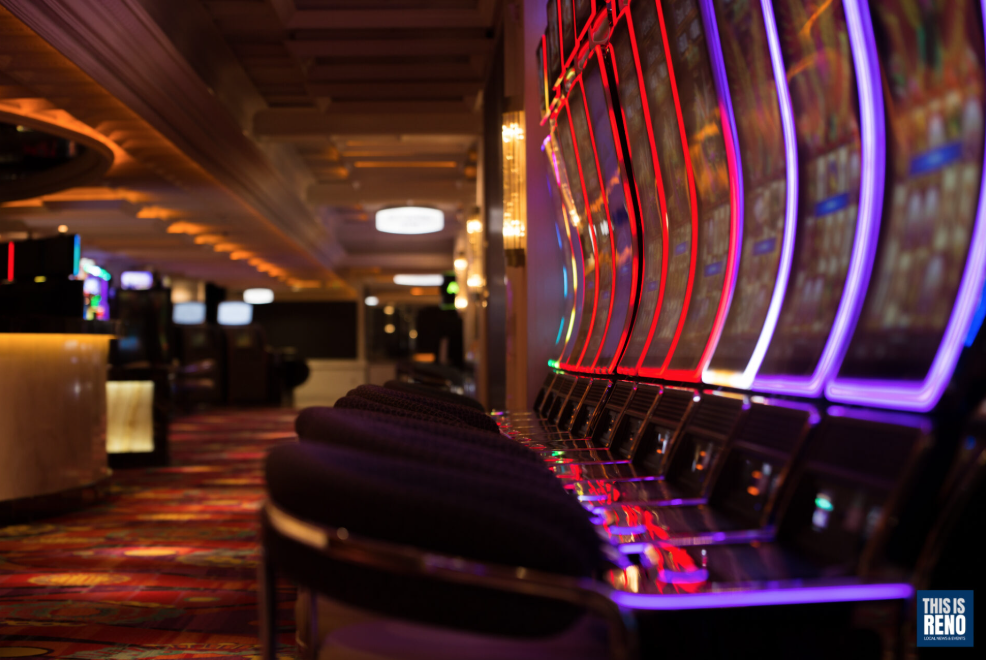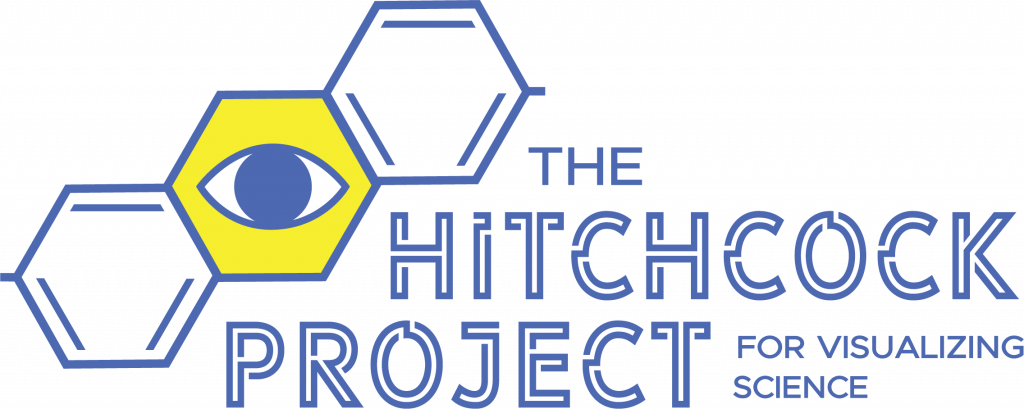Above: Downtown Reno, including the nearly always open casinos, shuttered in mid-March 2020 as COVID-19 stay-at-home orders took effect. Image: Trevor Bexon / This Is Reno
This story by Reynolds School student Lily Wright was shared with permission from This is Reno. To view the original version of the story, please visit This Is Reno’s website.
Across the world, smoking is the leading cause of preventable death. Of the 7 million deaths that occur annually because of tobacco, more than 18% are caused by secondhand smoke exposure. In Nevada, smoking is prevalent in part because of smoking in casinos and relaxed exemptions for smoking indoors compared to other states.
Despite the popularity of smoking in Nevada, nearly 60% of Nevadans support making all indoor workplaces smoke-free, including casinos, which are currently one of five exemptions from the 2006 Nevada Clean Indoor Air Act, along with 21-and-over bars, hotels, retail tobacco stores, strip clubs and brothels. Even with new age requirements, electronic cigarettes have also risen in popularity and given teens a popular way to get their hands on nicotine.
As Nevadans call for action to protect themselves from secondhand smoke and prevent tobacco addiction, researchers at the University of Nevada, Reno, are working to show the public and lawmakers the dangers Nevada’s smoking culture is having on children and teens.

Associate Professor Eric Crosbie from the University of Nevda, Reno School of Public Health published research in April 2024 that confirmed what scientists have long suspected and casinos have long denied. Crosbie’s research sought to investigate the levels of secondhand smoke in smoking-permitted areas of casinos compared to nonsmoking and family-friendly areas of casinos such as arcades, restaurants and bowling alleys. Using an off-the-shelf portable air quality monitor, Crosbie and fellow researchers measured smoking levels in various parts of casinos across Washoe County and kept track of how many active smokers were occupying each space.
“The big problem is that you have people in casinos and bars that have never smoked a cigarette a day in their life and are getting exposed to secondhand smoke,” Crosbie said.
The results of this study found that despite the expensive ventilation systems installed in casinos, there was poor air quality due to secondhand smoke throughout the casino — even in the nonsmoking areas that casinos claim are free of secondhand smoke.
The results of this study were consistent across all 14 casinos Crosbie tested. They all showed that regardless of the size of the casino, age of the casino and ventilation system used, every casino tested had levels of secondhand smoke in all indoor areas. The study also showed that even with relatively few active smokers in any given area, the smoke was still traveling through all areas of the casino.
“Those exposure levels may not be as harmful to you and me if we don’t go there all the time. But imagine the employees that are there every day for years,” Crosbie said. “Imagine if there’s a parent who loves to take their kids to dinner at the casinos. So there’s all these areas that I think people just don’t know they’re being exposed in.”
Crosbie’s study serves as a call for action from Nevada lawmakers to expand the 2006 Clean Indoor Air Act and protect the children of Nevada from secondhand smoke in casinos that, over time, can cause irreversible damage to their lungs.
Many casinos fear a smoking ban would result in fewer customers coming in and a loss of revenue over time. However, a 2022 study by C3 Gaming in Las Vegas found that in bars that implemented smoking bans, neither sales nor prices were impacted. Casinos that implement smoking bans have also found they lower costs after implementing the ban, since they spend less on maintaining slot machines, which frequently require repairs due to damage caused by tobacco smoke.
In spite of Nevada’s smoking culture, tobacco control initiatives have been successful at limiting teen cigarette smoking in the state. Jennifer Pearson, associate professor at UNR and tobacco control researcher, views tobacco control initiatives in Nevada as a success story. Pearson said she has seen firsthand in her research the changing dynamics between high schoolers and tobacco use.
“Smoking has gone way down, and vaping kind of spiked around 2021 among youth and is also going down,” she said. “So, what’s happening among youth is really good. It’s really looking like we’re doing the right thing.”
In 2021, the Truth Initiative, a nonprofit tobacco control organization, reported 4.8% of Nevada high schoolers were smoking cigarettes. In 2024, that number decreased to 3%, according to the Campaign for Tobacco-Free Kids.
While cigarette smoking rates have reached an all-time low, both nationally and in Nevada, a new product caught the interest of youth. Electronic vaping products have risen in popularity since the mid-2010s and replaced cigarettes as teens’ smoking product of choice.
“You’ve got these really attractive products that are truly marketed to young people. They’re not marketed to adult smokers,” Pearson said. “No 45-year-old man is using a Puff Bar. It’s just really obvious who they’re being marketed to. And it worked, right?”
Now, according to the 2023 Youth Risk Behavior Survey, 15% of Nevada high school students report using electronic vape products. Accessibility to e-cigarettes and fun flavors marketed to young people made them more appealing to high school students and led to the switch from cigarettes to vapes. More than half of Nevada high school students believe it would be easy for them to obtain electronic vapor products. It wasn’t until 2016 that e-cigarettes began being regulated by the FDA, 10 years after they showed up on U.S. shelves in 2006. It wasn’t until 2019 that the age requirement to purchase tobacco products was raised to 21.
“I would love to see vape shops be the only places where you can buy them so you can’t buy them at places like Walmart,” Pearson said. “I would love to see you have to get carded at the door and control access like we control access to legal weed. Access is key — if you can’t get your hands on it, you’re not going to use it.”
Malcolm Ahlo, president of the Nevada Tobacco Control and Smoke-Free Coalition, agrees that accessibility of e-cigarettes and prevalence of smoking in Nevada are playing a major role in teen smoking rates across the state. Ahlo and the NTCSC believe lawmakers in Nevada need to increase inspections for tobacco retailers from once every three years to annually in order to limit the amount of tobacco product sales to minors.
“We do have a problem with youth access, and that’s what we keep trying to tell our legislators,” Ahlo said. “If you sell tobacco products to a minor, you need to be fined, and there needs to be education to these retailers. Educating tobacco retailers about not selling to minors is super important in Nevada, because we’re not doing a very good job at it.”
At the NTCSC, the Nevada Youth Anti-Vaping campaign is using demographic information to find which high school students are more likely to use vapes to create personalized campaigns using social media and influencers to target these students.
“We don’t want to create a general campaign in schools because not all of the school is vaping. But if we can just identify who is vaping and make a program specific for them, then we can use our resources wisely and really have an impact on who’s vaping,” Ahlo said.
Researchers for tobacco control like Crosbie and Pearson and tobacco control initiatives like the NTCSC advocate for laws that would expand the 2006 Nevada Clean Indoor Air Act to include all indoor workplaces, restrictions on flavored vaping products, higher taxes on tobacco products and strengthened tobacco retail regulations in order to combat teen smoking and protect Nevadans from secondhand smoke.
Many also believe action needs to start with regulations on tobacco companies. In Nevada alone, tobacco companies spend $70 million annually marketing their products, according to the Campaign for Tobacco-Free Kids.
“I wouldn’t blame the smoker. It’s a very addictive product. I would blame the companies more. If you look at tobacco companies, and I’ve studied a lot of them, we know this from their own internal documents,” Crosbie said. “They’re cutthroat. They just don’t care.”
Nevada also receives over $210 million annually from tobacco taxes and settlements; however, only 1% of tax dollars in Nevada is used for tobacco control and prevention initiatives. Nevada is ranked 46th in the nation for lowest tobacco prevention and control funding for youth vaping.
The World Health Organization reports half of all people who smoke cigarettes and don’t quit will die from diseases caused by tobacco consumption. Research like that being done by Crosbie and Pearson, and coalitions like Ahlo’s, aim to protect another generation of Nevadans from the damages caused by secondhand smoke and tobacco addiction.
Lily Wright is a third-year journalism student studying at the Reynolds School of Journalism at UNR. She is a Las Vegas native and moved to Reno in 2022, and has since focused on political reporting surrounding the 2024 election and international reporting in France and Costa Rica. She wrote this story for her Science and New Media class during spring 2025, and it was published by This Is Reno on Apr 13, 2025.






